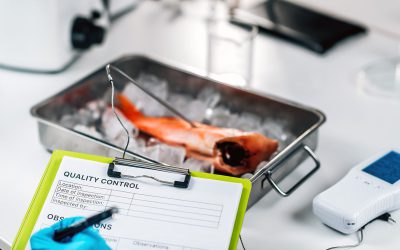A ideal is not yet not a solution
Emiel recently gave a training session on the topic of problem definition and measurable requirements.
During the session, he gave several times the feedback that it is not necessary, and may even be undesirable, to think about solutions while the participants were still formulating a clear problem definition.
Measurable requirements
Later in the day, the group set about formulating measurable requirements.
They began with a simple example:
My rosé is too hot.
It was clear that the measurable requirement had something to do with temperature and that the specification limits could be expressed in degrees Celsius, Fahrenheit or Kelvin.
A more difficult exercise was also scheduled.
One director formulated the complaint as follows:
I talk to the wrong people about the wrong topics.
In this case, it was not immediately clear what was to be measured.
Most participants started thinking about how to measure “wrong people” and “wrong” subjects.
That would not work, because you don’t know what is “wrong” if you don’t have a picture of what is “right.”
Emiel emphasized that it is first necessary to define what the right topics are and then find the right people to go with them.
Only then can you start measuring anything.
(For enthusiasts: four measurable requirements can be defined).

From problem definition to ideal image
However, there was one participant who immediately realized that a definition of what “good” looks like was needed.
Later, in the roundtable discussion, she indicated that she thought she was on the wrong track because Emiel had repeatedly told her not to think about solutions yet.
This got Emiel thinking for a moment…
A definition of good, an ideal image, is not yet a solution.
Just because you know what you want to talk about does not guarantee that you can actually talk about it.
Just because you know who you want to talk to does not guarantee that you will actually get those people to the table.
Only when you manage to talk about the right topics and do so with the right people will you have found solutions to the problem.
In the rosé case, you determine the measurable requirement first and then specify what is good.
In the other case, you specify what is good first and then determine the measurable requirement.
When you write it down like that, it’s quite an interesting phenomenon.
The question that then remains is when it is enough to define the problem and make that measurable, and when to start thinking about an ideal picture before you can move forward.
How often do you think about an ideal image first?
Also interesting to read
From Theory to Practice: Junior Consultant at Stoneridge
From theory to practice: Junior Consultant at Stoneridge Before working at Symbol, Junior Consultant Wisse Bos had never heard of a Production Part Approval Process (PPAP). Now he knows all the terms associated with a PPAP - such as PSW and PCN - like the back of his...
Optimize Quality Management with AI Tools
Optimize quality management with AI tools In the modern business environment, quality management is becoming increasingly important. Companies strive to provide high-quality products and services to ensure customer satisfaction and market competitiveness. Quality...
An ideal image is not yet a solution
From ISO 9001 to IATF 16949As consultants with expertise in ISO 9001 quality management systems, we are often asked how best to transition to IATF 16949. For suppliers, certification according to IATF 16949:2016 is an important prerequisite to participate in the...




